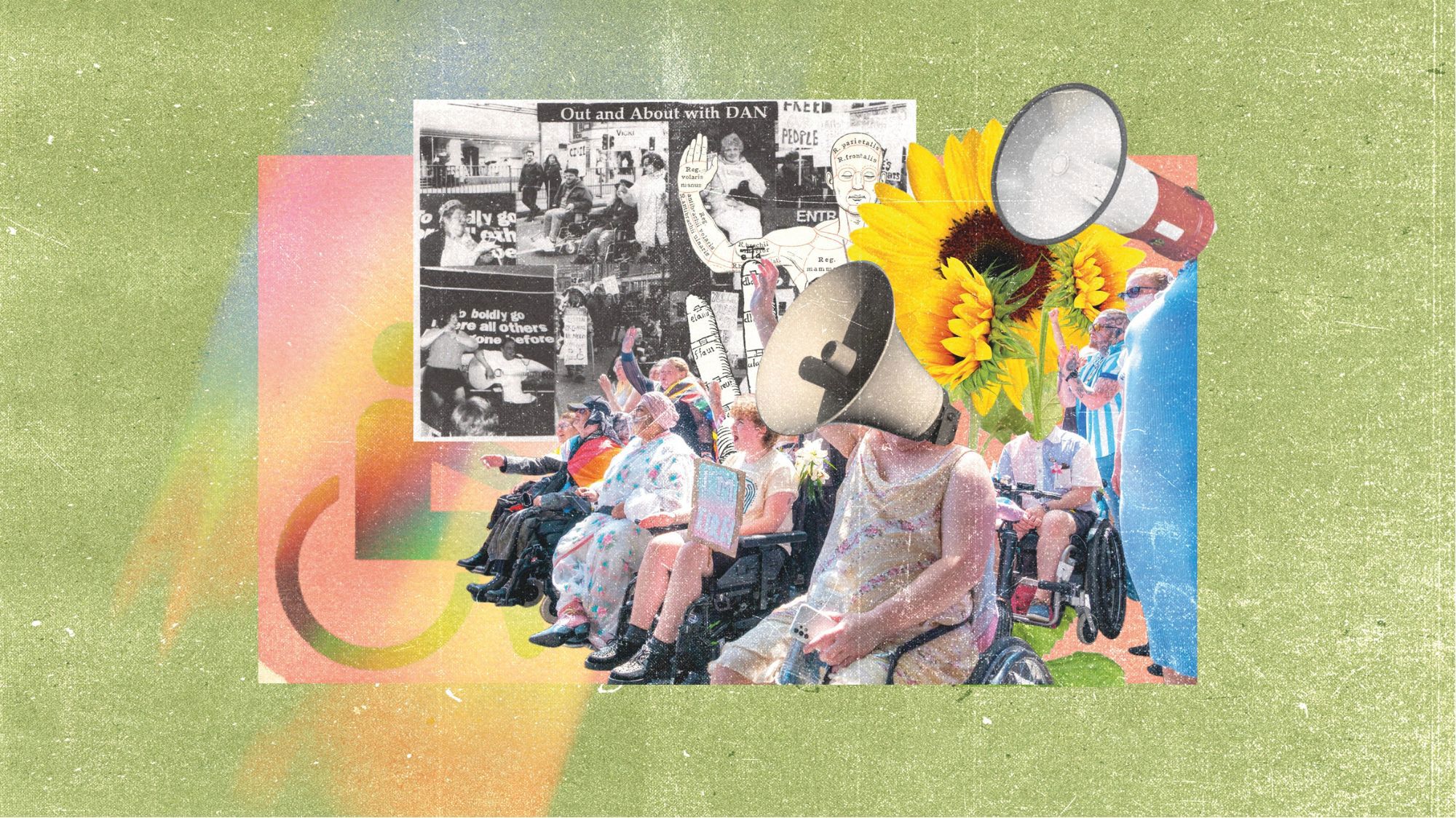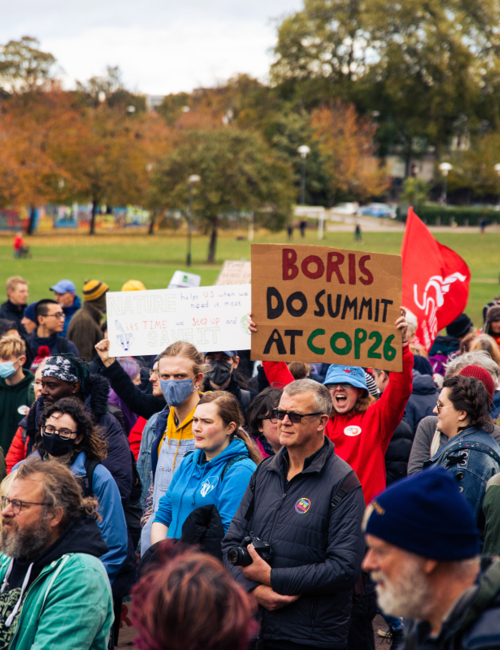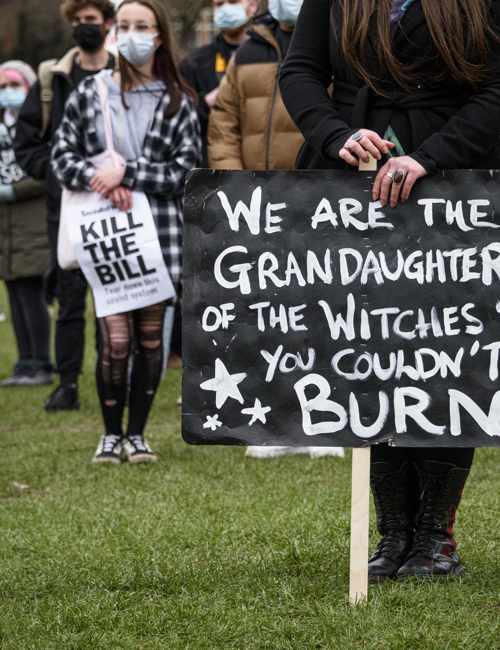While some might see protest as disruption to everyday life, for others taking to the streets is one of the most conspicuous methods of getting voices heard. Civil rights, such as simple access to transport, are easily taken for granted by many, but the most marginalised groups in society have had to fight for their civil rights through civil disobedience. For Disability Pride month, CJ De Barra recounts how the Disabled community used high-profile demonstrations in Nottingham to ensure their rights were fairly given.

Remarkably, almost twenty years ago, on a spring morning in March 1996, a large protest by the Disabled People's Direct Action Network (DAN) brought the city of Nottingham to a standstill. All central roads into the city were targeted, creating a traffic backlog that stretched as far as the Queen’s Medical Centre and Trent Bridge.
The protest was the largest to date from DAN, which had been formed in Norwich just three years earlier. It had already built a reputation for high-profile demonstrations involving civil disobedience, rallies and protests across England. The Nottingham action, its sixth protest, came a few months after a similar protest in Birmingham had resulted in £130 million being allocated for accessible buses.
DAN protesters learned valuable lessons from the civil rights movements and the power of ‘zaps.’ A zap was a protest technique aimed at bringing short, powerful bursts of political action designed to cause maximum disruption while drawing attention to a cause. It was a favoured tactic of the American Gay Activists Alliance (GAA) in the early 1970s.
The Disability Discrimination Act (DDA) was introduced in 1995, which made it illegal for employers and service providers to discriminate against disabled people. However, the law fell short when it came to practical access, like transportation.
The goal in Nottingham was clear: to protest the lack of accessible transport. This was focused in particular on the city’s £22 million Robin Hood Line, which had been introduced two years previously but was not accessible.
When they moved onto Maid Marian Way and the roundabout, protesters began targeting the main road into the city centre with wheelchair users positioning themselves across lanes and refusing to move
The protestors began gathering outside the Nottingham Playhouse at 7:30am. The aim was to hit the city at the height of rush hour traffic for maximum impact. When they moved onto Maid Marian Way and the roundabout, protesters began targeting the main road into the city centre with wheelchair users positioning themselves across lanes and refusing to move. They also began chaining themselves to buses as traffic ground to a halt on Derby Road, Wollaton and Parliament Street. By 9am the city was completely gridlocked, and within the next hour traffic was backed up to Trent Bridge.
In the afternoon, DAN turned its attention to the Robin Hood line by moving towards the Midlands Station on Carrington Street, where it faced a heavy police presence. Although the police had been initially caught off guard by the protest, they had moved quickly to deal with the traffic disruption. Unsure what to do, they threatened to start using bolt cutters to separate protestors in wheelchairs from the buses.
Confrontations grew more intense with reports of protesters being pulled from wheelchairs, with several arrests made. Frustrated by the backlogs, some commuters began heckling the demonstrators. Similar scenes were unfolding over in West Bridgford as protesters targeted the constituency surgery of the Rushcliffe MP, Kenneth Clarke.
Disabled people of all ages and backgrounds, with varying impairments, united in protest, chanted: “What do we want? Civil rights! When do we want them? Now!” They brought Nottingham to a halt for two hours; no traffic moved through the city centre. Some drivers abandoned their cars while rubbish piled up in the street after bin men couldn’t get through to collect it.
Speaking to the local paper, Outrage, Sharon Mace, an activist from Oxford, described the action as “empowering.”
“It’s crucial for disabled people to be on the frontline,” she said. “Our action was very empowering. Maybe non-disabled people can begin to realise what it is like to have our rights of access denied 365 days a year!”
Many demonstrators wore t-shirts or carried signs bearing the slogan: “Piss on Pity” which was part of the wider campaign. Also speaking with Outrage, Nigel Bull, who had travelled from London, added: “Our civil rights are at last under discussion. Many people were talking about them for the first time. We are here also to represent the thousands of disabled people out of sight, out of mind in institutions.”
Eventually, the demonstrators were corralled into a car park for several hours while a DAN spokesperson negotiated with railway bosses. DAN promised further action if improvements were not made. Police prepared for more days of protests by installing extra traffic wardens and emergency diversions.
In a joint statement, a Central Trains manager admitted that the Robin Hood Line was “currently failing Nottingham’s disabled travellers,” but pledged improvements.
“By September, at the latest, we will introduce lightweight ramps to the Robin Hood Line, making it accessible to all disabled people,” they said. The company further promised to extend this rollout to all Central Trains within two years, pending approval from disabled passengers themselves.
As the announcement was read aloud, the crowd erupted in cheers. DAN declared it a significant victory. After Nottingham, the group turned its attention to Derby, holding street protests in September of that year and installing a concrete ramp at Buxton train station.
More than 100,000 people took part in these types of action across the country, either by handcuffing themselves to buses or joining demonstrations, including ones outside Parliament. DAN became instrumental in bringing disability rights into mainstream politics and creating real change.
We have a favour to ask
LeftLion is Nottingham’s meeting point for information about what’s going on in our city, from the established organisations to the grassroots. We want to keep what we do free to all to access, but increasingly we are relying on revenue from our readers to continue. Can you spare a few quid each month to support us?




